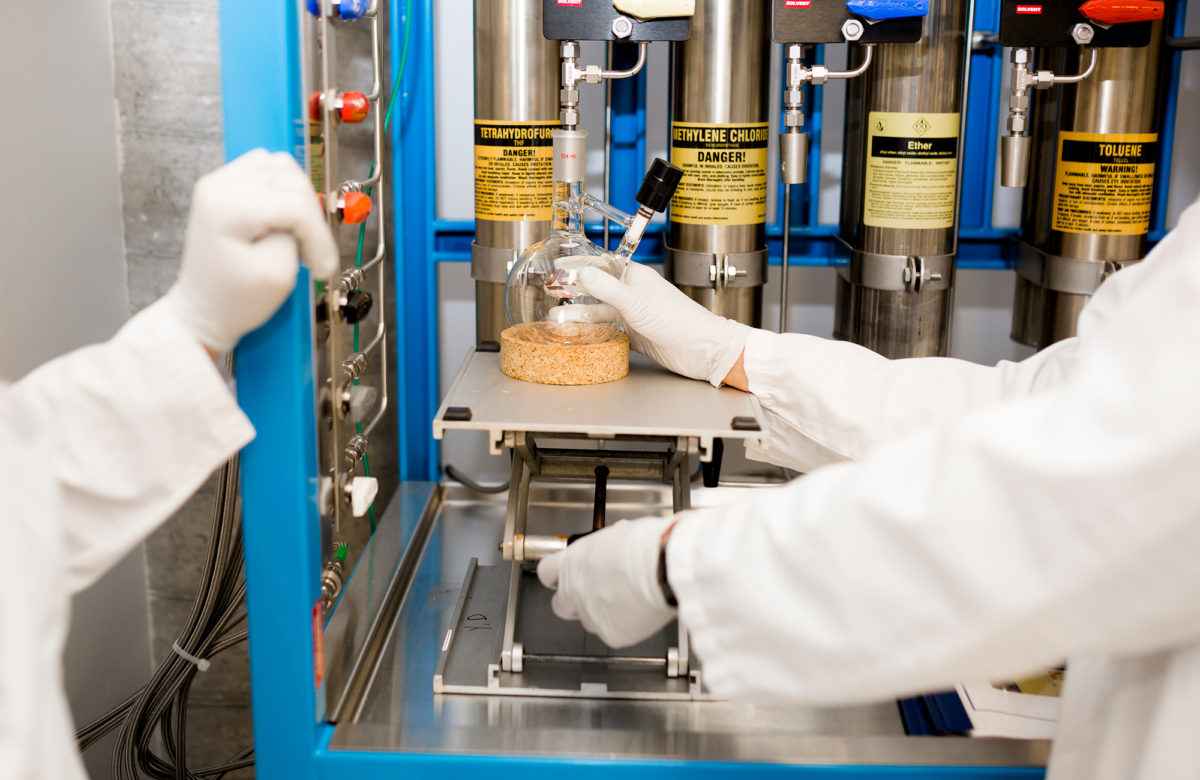The Organometallic Chemistry Laboratory for the Design of Catalysts and Therapeutics operates in the field of medicinal chemistry, particularly the development of multitasking organometallic therapeutics
At the interface of chemistry and biology, work at the Organometallic Chemistry Laboratory for the Design of Catalysts and Therapeutics also includes research on targeted thermoresponsive drug delivery systems, the development of C-H bond activation catalysts, and the isolation of antibiotics.
The facility boasts state-of-the-art equipment and provides services such as proteomic analysis (identification of proteins) and mass spectrometry (identification of organic molecules, analysis of natural products, and quantification of pharmaceutical metabolites).
Proteomic analysis
The proteomic analysis service is available to the scientific community for identifying proteins isolated from microorganisms or tissues of higher organisms. Analyses can be done at scan ranges up to 1700 m/z, and a variety of MS/MS experiments can also be performed, including daughter ion, parent ion, and neutral fragment loss analysis. The instrument uses various ionization modes such as electrospray and nanospray. It can also provide information on the mass of triptych peptides and their amino acid sequences and can be used to determine post-translational changes such as phosphorylation, the addition of sugars to proteins, and more. Proteomic analysis is overseen by Professor Annie Castonguay, with analyses carried out by A. Nikolakakis (M.Sc. Microbiology). Fees- University community: $60 per analysis
- Industry: $120 per analysis
Mass spectrometry
The mass spectrometry service is available to the scientific community. It can be used to identify organic molecules, analyze natural products, quantify pharmaceutical metabolites, analyze trace pollutants, determine the molecular weight of proteins, sequence peptides, and more. A variety of MS/MS experiments can be performed, such as daughter ion, parent ion, and neutral fragment loss analysis. Various ionization modes are used, including electron impact (EI), chemical ionization (CI), atmospheric pressure chemical ionization (APCI), electrospray, and nanospray. Peptide and protein analysis software is also available as part of the service. Fees- University community: $60 per analysis
- Industry: $120 per analysis
Contacts
Annie Castonguay
Professor and Scientific leader
Phone: 450-687-5010, ext. 8850
Email: annie.castonguay@inrs.ca
Organometallic Chemistry Laboratory for the Design of Catalysts and Therapeutics
Institut national de la recherche scientifique
Armand-Frappier Santé Biotechnologie Research Centre
531 boul. des Prairies
Laval, Quebec H7V 1B7
Canada


